Let us now look at the relation between the relative risk and the odds ratio (Zhang and Yu, 1998) OR= ˇ 1 1 1ˇ 1 ˇ 2 1 ˇ 2 = ˇ ˇ 2 1 2 1 1 = RR 2 1 (21) From this we see that OR is always further away from 1 than RR But, more importantly, we see that the odds ratio is close to the relative risk if probabilities of the outcome are small (Davies et al, 1998)Relative Risk (or risk ratio) is the risk of an event occurring in the exposed group relative to the unexposed group;Nov 18, 1998 · Subsequently, the term relative risk commonly refers to either the risk ratio or the odds ratio However, only under certain conditions does the odds ratio approximate the risk ratio Figure 1 shows that when the incidence of an outcome of interest in the study population is low (
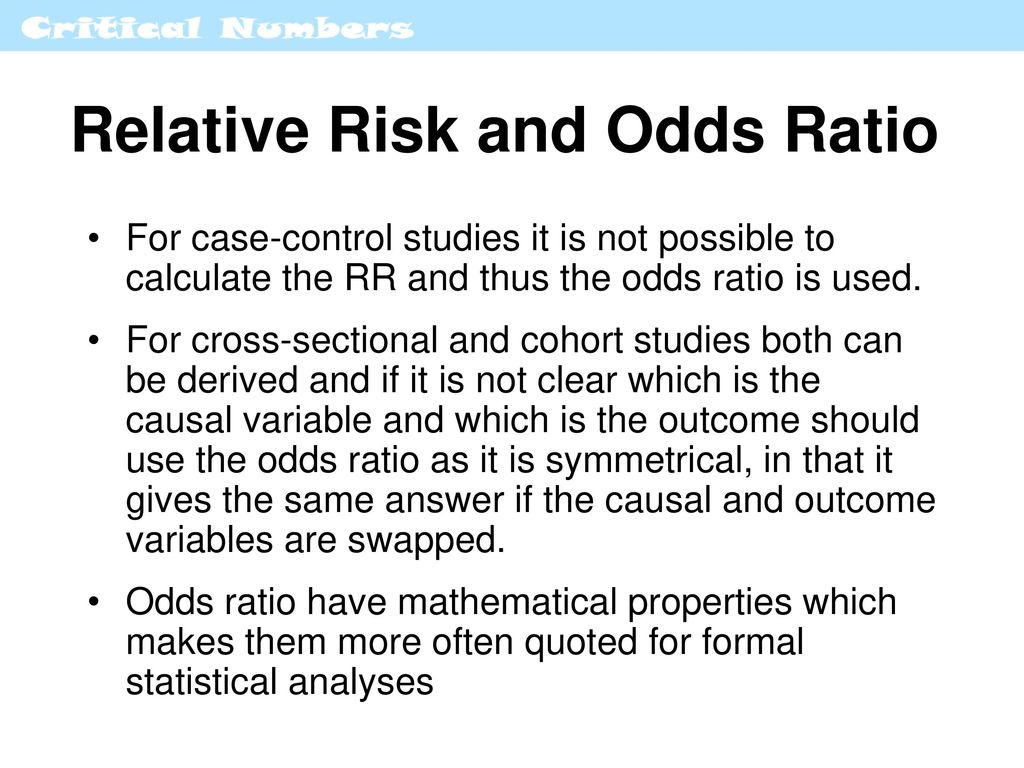
Critical Numbers Living With Risk Ppt Download
Odds vs relative risk
Odds vs relative risk-Absolute Risk Reduction is the decrease in risk provided by an exposure Is a clinically useful measure of the value of anIn both cases the relative risk was 5, but with entirely different levels of impact Please note this example is not meant to be interpreted that taking care of your health is not important!!!



Relationship Between Rr And Or A Rr Probability A Probability B Download Scientific Diagram
2) Relative Risk and Odds Ratio for the nonobese Relative Risk and Odds Ratio for the obese 3) Overall, you can see that decreasing the baseline incidence will decrease the odds ratio (300 in those who are nonobese versus 129 in those who are obese) Obviously, these results run counterJun 10, 18 · Risk vs odds The terms 'risk' and 'odds' are often used interchangeably but they actually have quite different implications and are calculated in different ways Odds is a concept that is very familiar to gamblers It is a ratio of probability that a particular event will occur and can be any number between zero and infinityMay 04, 09 · For more than years, there has been debate about the relative merits of risk ratios compared with odds ratios as estimates of causal associations between an exposure (such as smoking or medication for high blood pressure) and a binary outcome (such as death vs life)
Relative risk and odds ratio The relative risk and the odds ratio are measures of association between exposure status and disease outcome in a populationAug 17, 18 · For estimates of odds ratios, this is logit (ie the logarithm of the odds of the mean);Relative Risk, Odds, and Fisher's exact test I) Relative Risk A) Simply, relative risk is the ratio of p 1/p 2 For instance, suppose we wanted to take another look at our Seat belt safety data from Florida Safety equipment Injury in use Fatal Nonfatal Total None 1,601 165,527 167,128 Seat belt 510 412,368 412,878
Why are the relative risk and odds ratio approximately equal?It is assumed that, if the prevalence of the disease is low, then the odds ratio approaches the relative risk Case control studies are relatively inexpensive and less timeconsuming than cohort studies In this case the odds ratio (OR) is equal to 16 and the relative risk (RR) isSince relative risk is a more intuitive measure of effectiveness, the distinction is important especially in cases of medium to high probabilities If action A carries a risk of 999% and action B a risk of 990% then the relative risk is just over 1, while the odds associated with action A are more than 10 times higher than the odds with B



Odds Ratios Ors For The Relative Risk Of Malaria Infection In Each Village Compared With Castanha Ahima The Village With The Lowest Number Of Malaria Infections Used As The Reference



2 Relative Risk And Odds Ratio Youtube
Dec 08, 18 · Risk Ratio vs Odds Ratio Whereas RR can be interpreted in a straightforward way, OR can not A RR of 3 means the risk of an outcome is increased threefold A RR of 05 means the risk is cut in half But an OR of 3 doesn't mean the risk is threefold;Both the odds ratio and the relative risk compare the relative likelihood of an event occurring between two groups The relative risk is easier to interpret and is consistent with general intuition Some designs, however, allow only for the calculation of the odds ration Covariate adjustment is easier for an odds ratioSep 02, · Relative Risk Ratio and Odds Ratio September 2, , 500 pm The Relative Risk Ratio and Odds Ratio are both used to measure the medical effect of a treatment or variable to which people are exposed The effect could be beneficial (from a


The Effect Of Misclassification Error On Risk Estimation In Case Control Studies



Relative Risk Odds Ratio And Attributable Risk Relative Risk Incidence Epidemiology
The risk ratio (or relative risk) is the ratio of the risk of an event in the two groups, whereas the odds ratio is the ratio of the odds of an event (see Box 92a) For both measures a value of 1 indicates that the estimated effects are the same for both interventionsRisk is often a more intuitive concept than odds, and thus understanding relative risks is often preferred to understanding relative odds However, OR does not suffer from the same causal assumption limitations as RR, making it more widely applicableThe absolute risk is the probability of an event in a sample or population of interest The relative risk (RR) is the risk of the event in an experimental group relative to that in a control group The odds ratio (OR) is the odds of an event in an experimental group relative to that in a control group
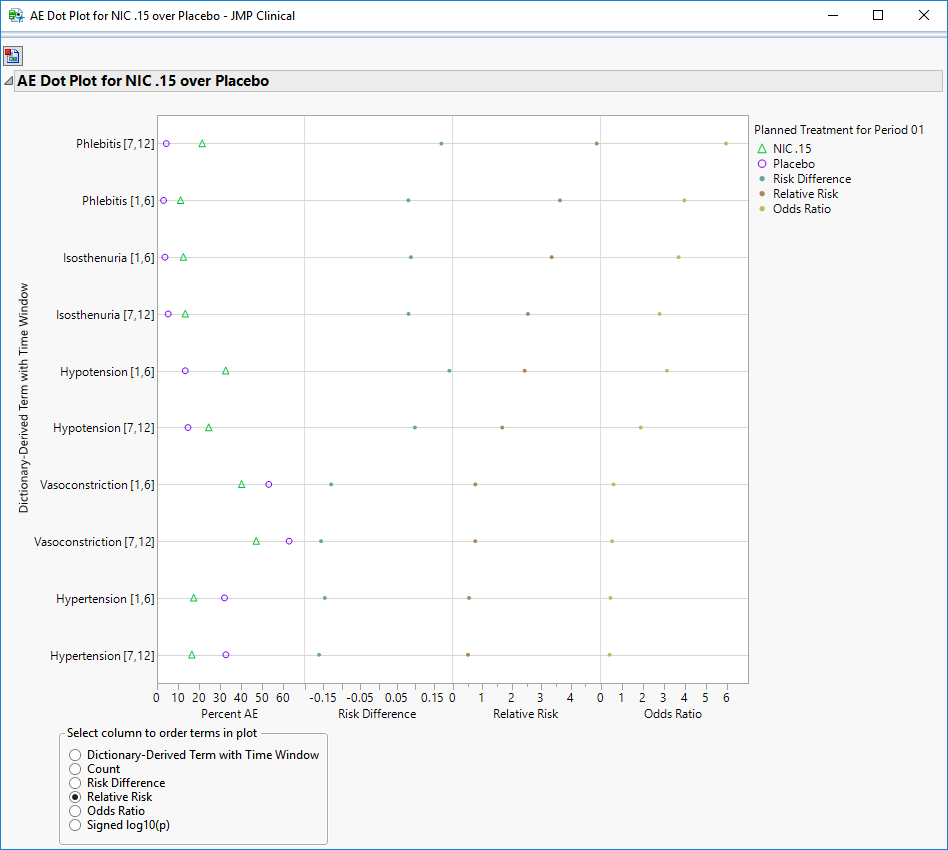


Ae Incidence Screen
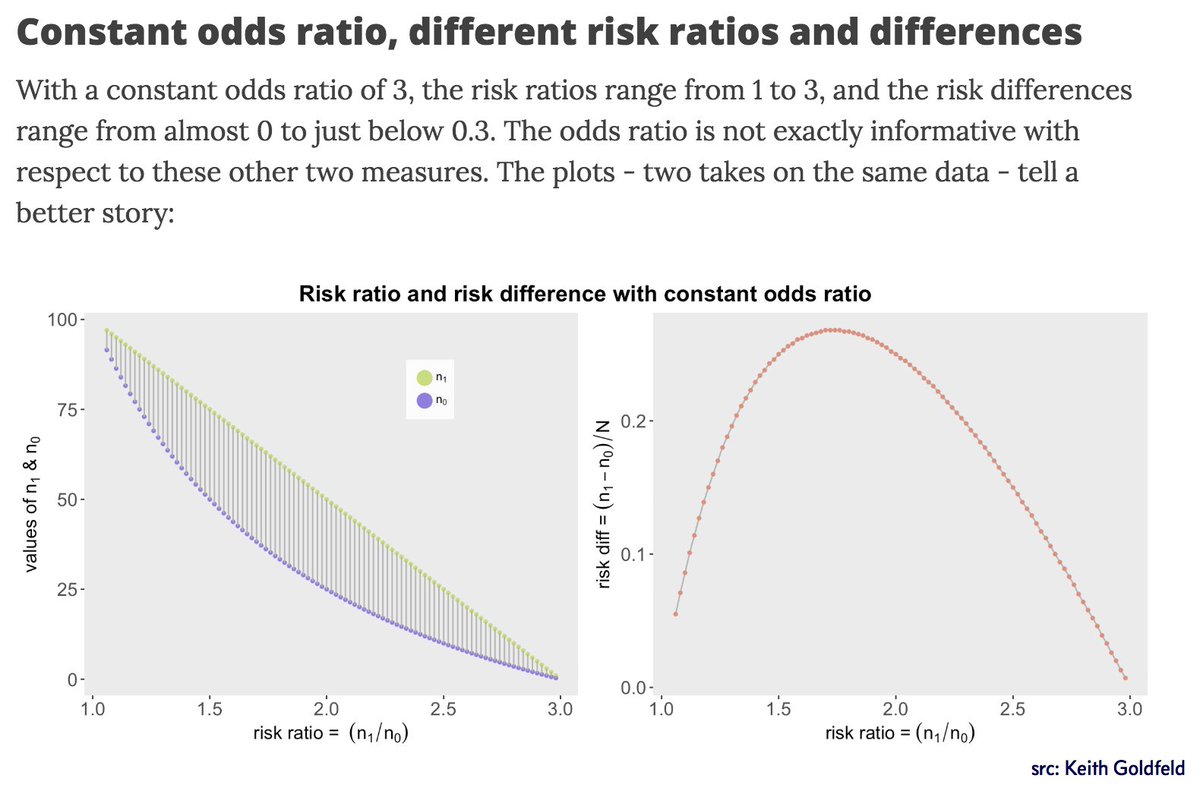


Mara Averick As Someone Who Asks For Odds Ratios And Relative Risk At The Vet I This Post How The Odds Ratio Confounds A Brief Study In A
Oct 27, 17 · When the study design allows for the calculation of a relative risk, it is the preferred measure as it is far more interpretable than an odds ratio The odds ratio is extremely important, however, as it is the only measure of effect that can be computed in a casecontrol study designJan 08, 16 · Percent increase = (Risk Ratio lower bound – 1) x 100 Percent decrease = (1 – Risk Ratio upper bound) x 100 It's worth stating again when comparing two proportions close to 1 or 0, the risk ratio is usually a better summary than the raw difference Odds Ratios We now turn to odds ratios as yet another way to summarize a 2 x 2 tableOdds ratio is similar to relative risk In the sheepskin trial the relative risk was 058 and the odds ratio was 054 For most clinical trials where the event rate is low, that is less than 10% of all participants have an event, the odds ratio and relative risk can be considered interchangeable



Figure1 The Bmj



What Is An Odds Ratio And How Do I Interpret It Critical Appraisal
Another measure we can find is odds Odds Odds is a ratio of the number ofMay 15, 14 · The difference between odds ratio and risk ratio May 15, 14 • ericminikel The other day I was emailing with a statistical genetics colleague about a rare SNP associated with a phenotype I stated that the minor allele frequency (MAF) was 07% in cases and 01% in controls, for a risk ratio of 7 After clicking send, I felt a twinge of regretMay 18, 12 · Attack Rate (Risk) Attack rate for exposed = a ⁄ ab Attack rate for unexposed = c ⁄ cd For this example Risk of tuberculosis among East wing residents = 28 ⁄ 157 = 0178 = 178% Risk of tuberculosis among West wing residents = 4 ⁄ 137 = 0029 = 29% The risk ratio is simply the ratio of these two risks Risk ratio = 178 ⁄ 29 = 61



Odds Ratios Relative Risks Or Hazard Ratios From Studies Reporting Download Table



Cureus What S The Risk Differentiating Risk Ratios Odds Ratios And Hazard Ratios
Ie if the odds ratio is 2, then if the odds of an event are 11 (50% probability) in the control group, they are 21 (67% probability) in the test group for a 17% absolute risk difference, but for control group odds of 199 (1%), it is a 299 (2%) test group odds for a 1% absolute risk difference The relative risk has a similar propertyRelative measures of effect are risk ratio (ie the ratio between two incidence proportions), incidence rate ratio (the ratio between two incidence rates), and OR (the ratio between two odds) The risk difference is an absolute measure of effect (ie the risk of the outcome in exposed individuals minus the risk of the same outcome in unexposed)Jan 01, 16 · Odds ratio (OR) is a statistic commonly encountered in professional or scientific medical literature Most readers perceive it as relative
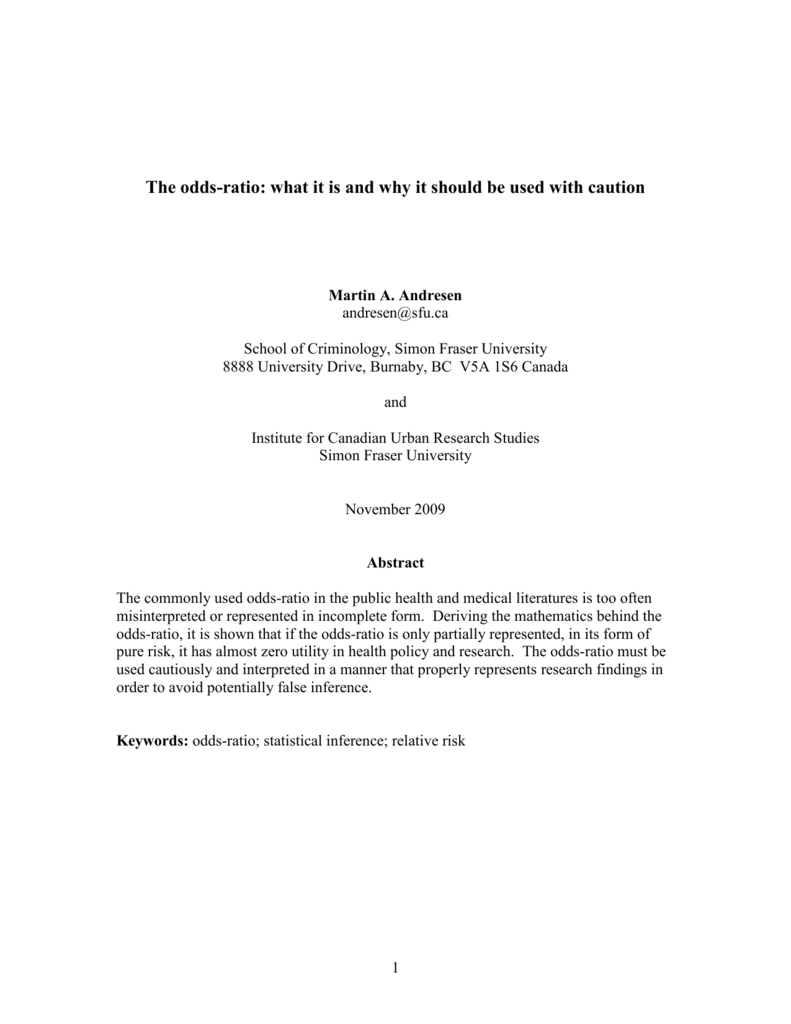


The Odds Ratio What It Is And Why It Should Be Used With Caution



Odds Ratios And Risk Ratios Youtube
For example, a relative risk of 15 would suggest a 50% increase in risk, whereas a relative risk of 05 would suggest a 50% decrease in risk Odds ratios The main difference between this and the other two measures is that there is no way of including a time element in this modelWhen the disease is rare, the odds ratio will be a very good approximation of the relative risk The more common the disease, the larger is the gap between odds ratio and relative risk In our example above, p wine and p no_wine were 0009 and 0012 respectively, so the odds ratio was a good approximation of the relative risk OR = 0752 and RR = 075RELATIVE RISK, ODDS RATIO, ATTRIBUTABLE RISK AND NUMBER NEEDED TO TREAT An improved version of this article is now available in Third Edition (12) of the book RATE, RISK, HAZARD, AND ODDS Depending upon the focus, different indices are used to assess disease occurrence in a group of subjects These can be explained as follows



How Can We Convert Rate Ratio To Odds Ratio



Odds Ratio Relative Risk Risk Difference Statistics Tutorial 30 Marinstatslectures Youtube Study Skills Statistics Tutorial
The relative risk is best estimated using a population sample, but if the rare disease assumption holds, the odds ratio is a good approximation to the relative risk — the odds is p / (1 − p), so when p moves towards zero, 1 − p moves towards 1, meaning that the odds approaches the risk, and the odds ratio approaches the relative riskAug 17, 18 · For estimates of odds ratios, this is logit (ie the logarithm of the odds of the mean);Risk and Odds Understand the concepts of risk and Odds Ratio Risk Absolute Risk is the risk of an event occurring in the exposed group;
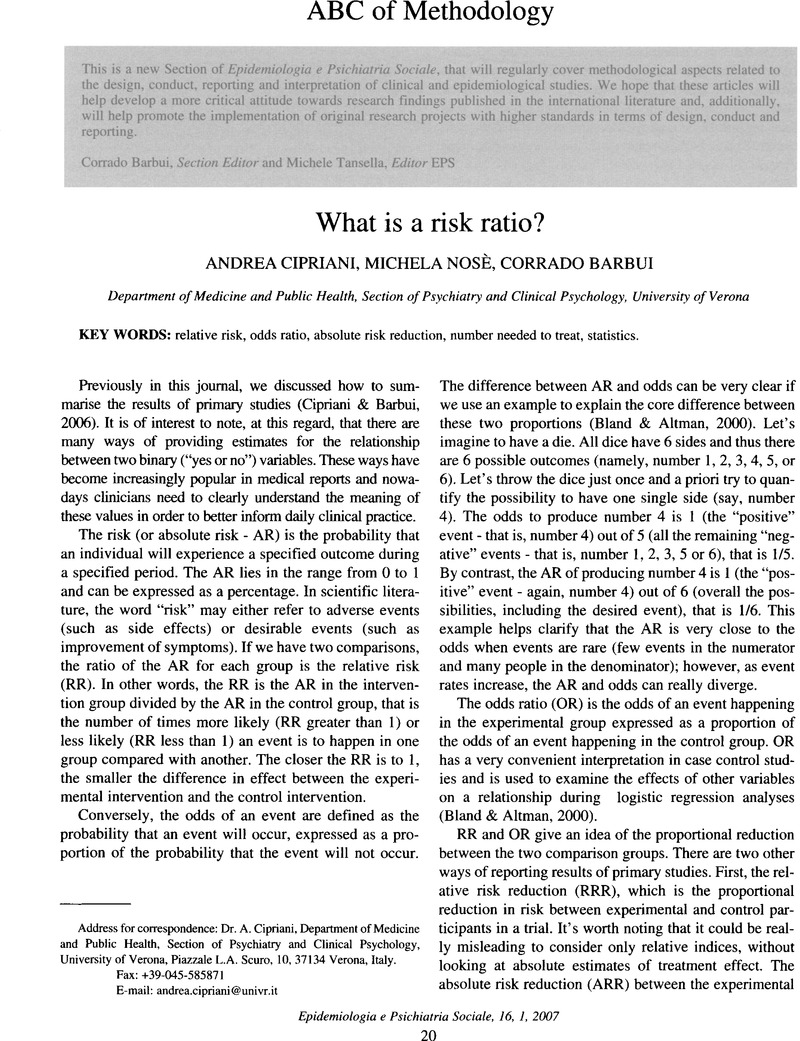


What Is A Risk Ratio Epidemiology And Psychiatric Sciences Cambridge Core



Odd Ratio Relative Risk And Attributable Risk Youtube
The interpretation of an odds is more complicated than for a risk The simplest way to ensure that the interpretation is correct is to first convert the odds into a riskMar 28, 1998 · Even with initial risks as high as 50% and very large reductions in this risk (odds ratios of about 01), the odds ratio is only 50% smaller than the relative risk (01 for the odds ratio compared with a true value for the relative risk of 02)Apr 25, 19 · The first is the notable divergence between odds and risk when computing the relative change as the absolute change increases The 50% relative change in atherosclerosis between the study arms yielded essentially no difference between the risk and odds because the absolute percentage with the condition was so low (% vs %)



Relationship Between Rr And Or A Rr Probability A Probability B Download Scientific Diagram



Odds Ratio Relative Risk Calculation Definition Probability Odds Youtube
Odds ratios (OR) are commonly reported in the medical literature as the measure of association between exposure and outcome However, it is relative risk that people more intuitively understand as a measure of association Relative risk can be directly determined in a cohort study by calculating a risk ratio (RR)Feb 07, 14 · A smaller proportion of the probiotic group developed diarrhoea associated with antibiotic use compared with the placebo group (7 (12%) v 19 (34%);Sep 28, · Excess Relative Risk = (RR1) x 100% The "Null" Values The null value is to the measure of association when the incidence is the same in the groups being compared If this is the case, the risk ratio = 1, the risk difference = 0, and the excess relative risk = 0
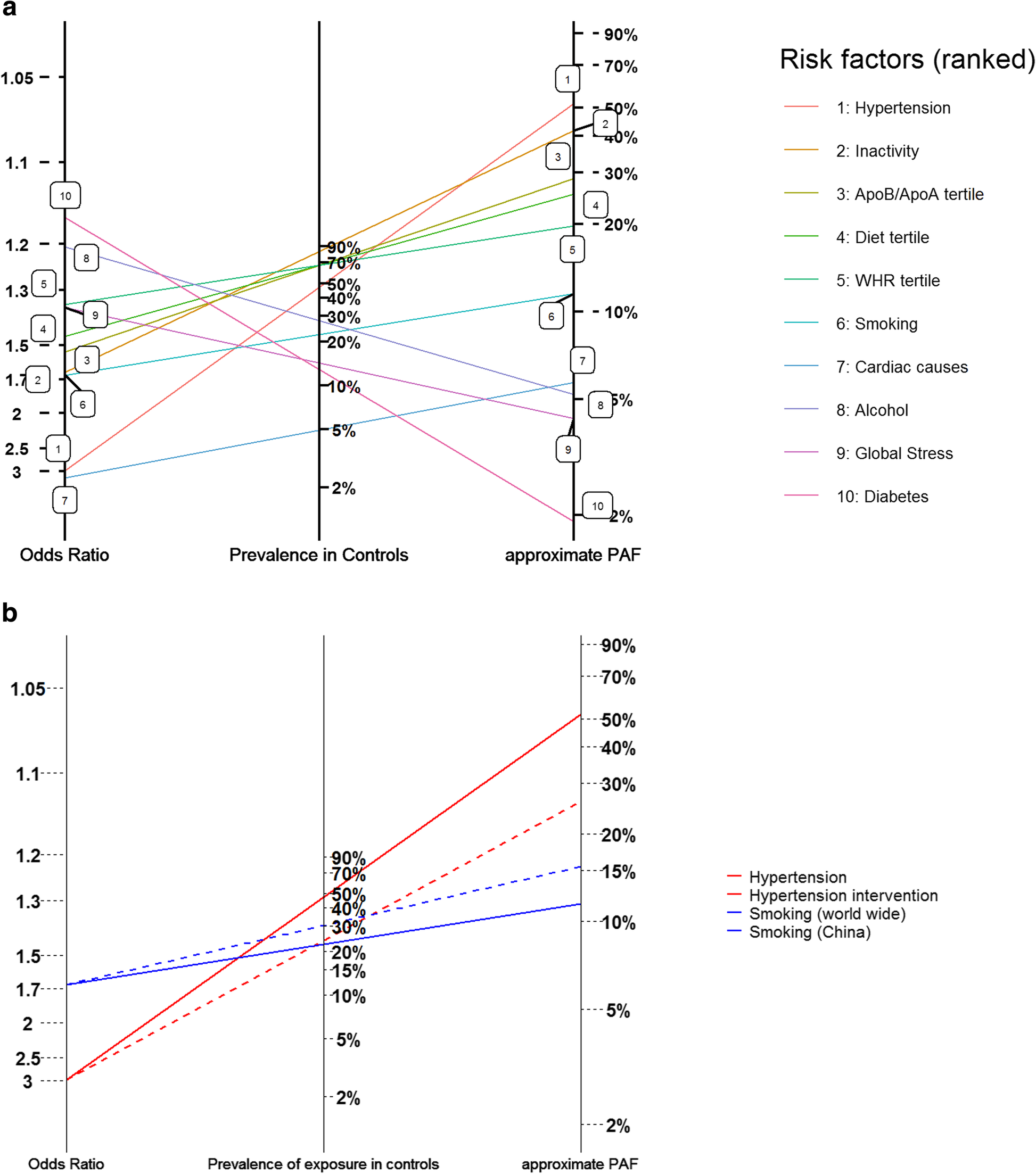


Graphical Comparisons Of Relative Disease Burden Across Multiple Risk Factors Bmc Medical Research Methodology Full Text
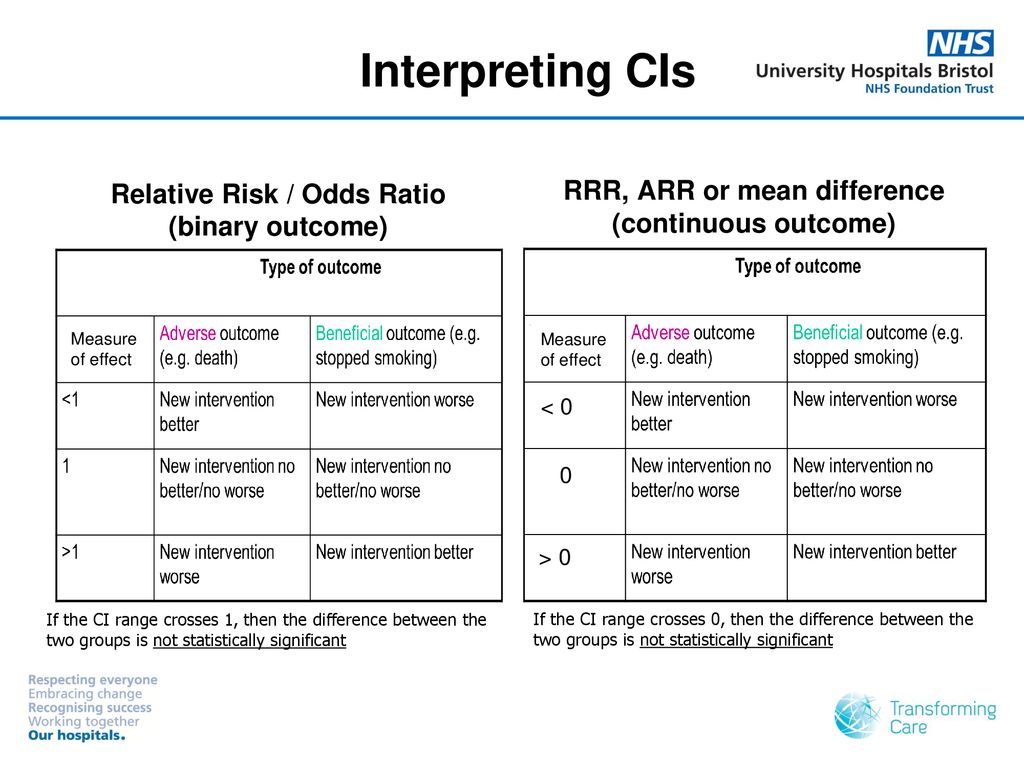


Interpreting Basic Statistics Ppt Download
Jun 09, 14 · The difference between odds and probability is important because Relative Risk is calculated with probability and Odds Ratio is calculated with odds Relative Risk (RR) is a ratio of probabilities or put another way it is one probability divided by another Odds Ratio (OR) is a ratio or proportion of odds I just remember that odds ratio is aFor estimates of relative risk ratios, this becomes logarithm We can specify this manually, or just use a builtin family for our generalized linear model for which the logarithm is the canonical link fucntion, and hence the defaultOdds ratio and relative risk



Relative Risks Odds Ratios The Odds Ratio Two Binomials Coursera



Odds Ratios Vs Risk Ratios Stats By Slough
Jul 11, 16 · The basic difference is that the odds ratio is a ratio of two odds (yep, it's that obvious) whereas the relative risk is a ratio of two probabilities (The relative risk is also called the risk ratio) Let's look at an example Relative Risk/Risk Ratio Suppose you have a school that wants to test out a new tutoring programRather the odds is threefold greater Interpretation of an OR must be in terms of odds, notFeb 01, 08 · The relative risk (RR) and the odds ratio (OR) are the two most widely used measures of association in epidemiology The direct computation of relative risks is feasible if meaningful prevalences
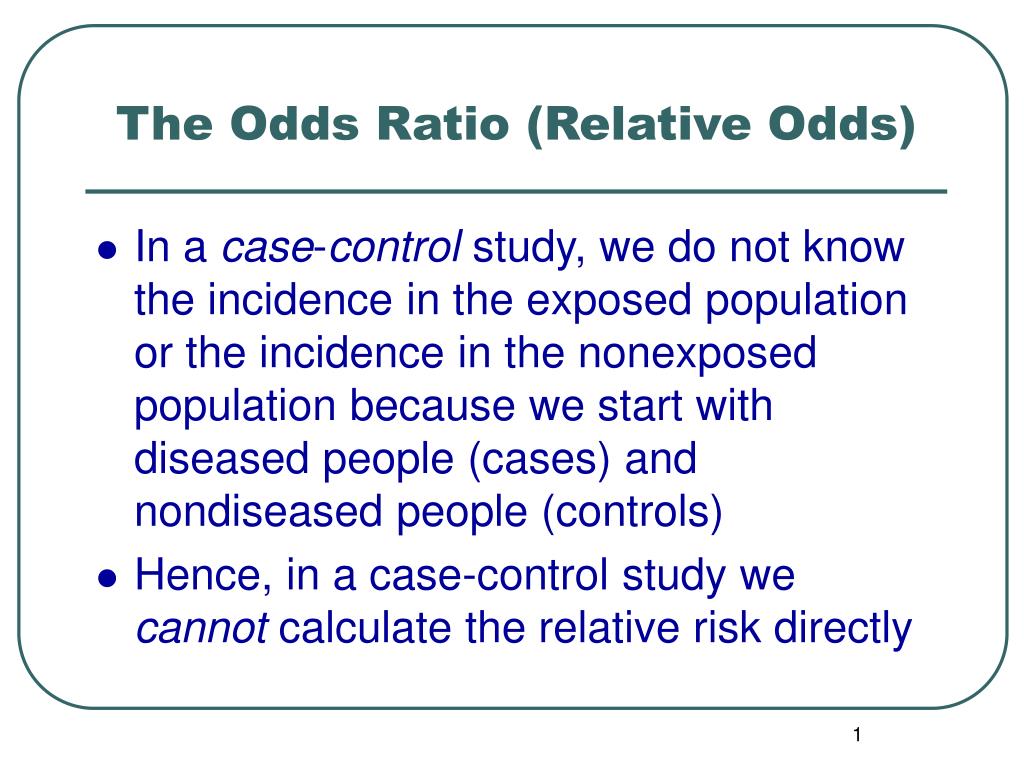


Ppt The Odds Ratio Relative Odds Powerpoint Presentation Free Download Id 6056



Relative Risk Odds Ratio Relative Risk Public Health
For example, an odds of 001 is often written as 1100, odds of 033 as 13, and odds of 3 as 31 Odds can be converted to risks, and risks to odds, using the formulae;Odds ratio ended up appearing in Question 2 from the second Primary Exam paper of 08, and therefore a more extensive discussion of OR and risk is carried out in the CICM Primary statistics summaries Relative risk reduction RRR= absolute risk reduction divided by the control group riskThe odds ratio ((a/c)/(b/d)) looks at the likelihood of an outcome in relation to a characteristic factor In epidemiological terms, the odds ratio is used as a point estimate of the relative risk in retrospective studies Odds ratio is the key statistic for most casecontrol studies



Fully Adjusted Odds Ratio Or Relative Risk For Stroke Compared With Download Scientific Diagram
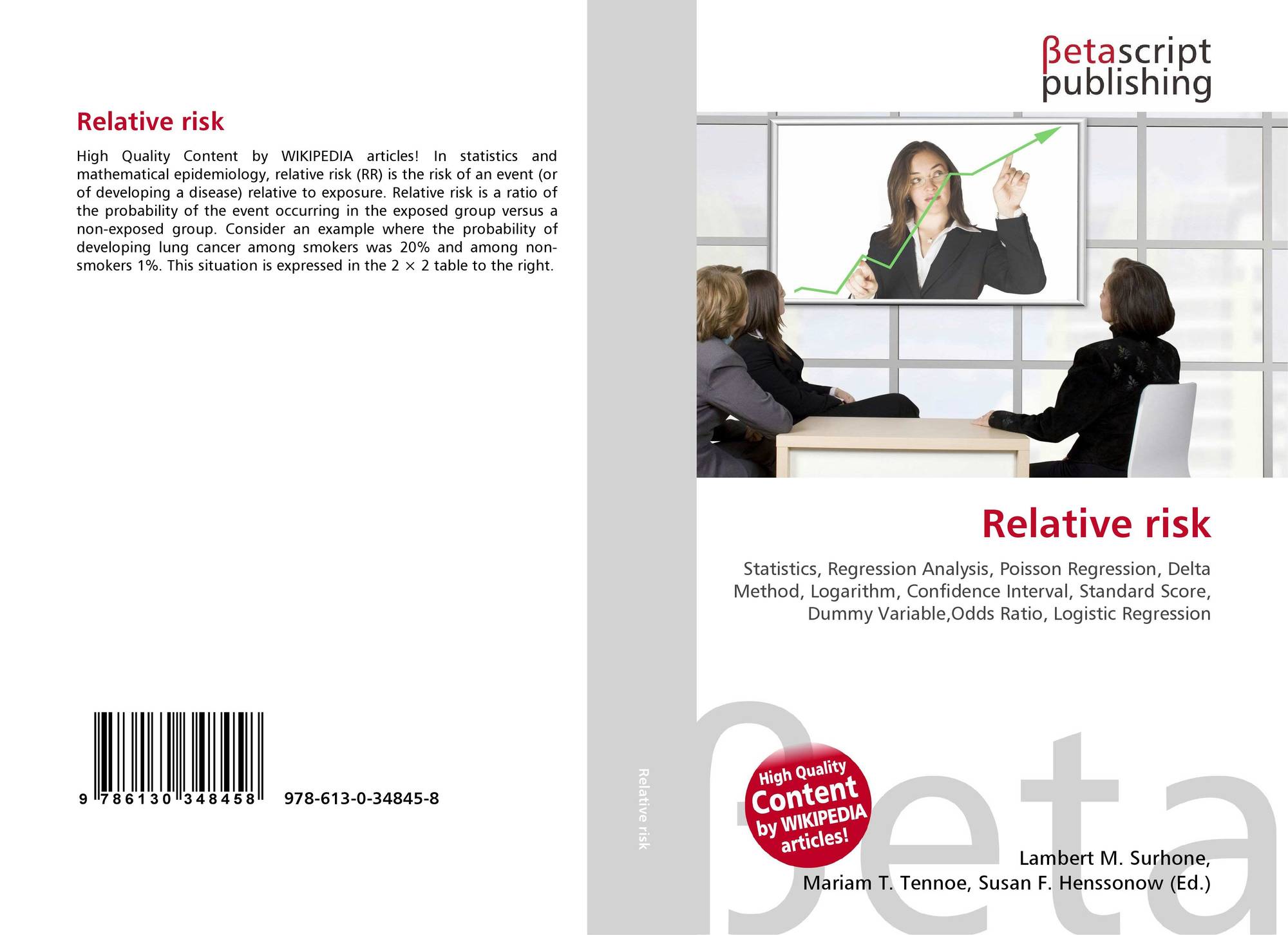


Relative Risk 978 613 0 8
Jan 10, 13 · Odds ratios and relative risks are interpreted in much the same way and if and are much less than and then the odds ratio will be almost the same as the relative risk In some sense the relative risk is a more intuitive measure of effect sizeFor estimates of relative risk ratios, this becomes logarithm We can specify this manually, or just use a builtin family for our generalized linear model for which the logarithm is the canonical link fucntion, and hence the defaultRelative risk 036, 95% confidence interval 017 to 079) When adjusted using logistic regression to control for other factors, the effects of the probiotic drink in reducing antibiotic associated



Pdf Using Sas Procedures Freq Genmod Logistic And Phreg To Estimate Adjusted Relative Risks A Case Study Semantic Scholar



The Relationship Between Nnt Calculated From An Odds Ratio Or And An Download Scientific Diagram
Probability, Odds Ratio and Relative Risk Assumptions Standard statistical methods assume that the outcome of an event A for each individual is independent of the outcome for the other individuals (Relative Risk) Risk Ratio (RR) = Absolute risk (AR) in Group 1 ÷ Absolute riskRR and OR are commonly used measures of association in observational studies In this video I will discuss how to interpret them and how to apply them to pat
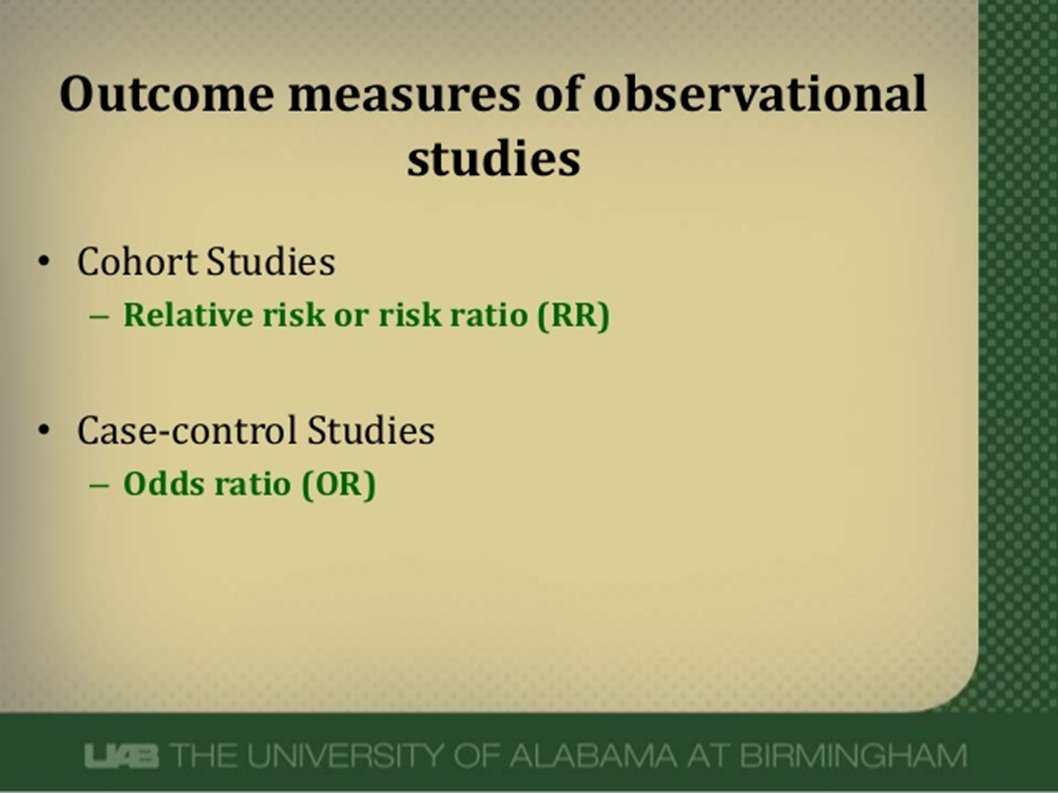


Abdullah Kharbosh Auf Twitter What Does An Odds Ratio Or Relative Risk Mean By Ebmteacher Casecontrol Cohort T Co Shfiaepl57 عبر Slideshare



Hazard Ratio Vs Relative Risk Page 2 Line 17qq Com



Effect Estimates And The Role Of The Chance Ppt Download



Estimated Relative Risk Odds Ratio Or Hazard Ratio With 95 Ci For 4 Download Scientific Diagram



Pdf Statistical Notes For Clinical Researchers Risk Difference Risk Ratio And Odds Ratio



Estimated Relative Risk Rr Compared With Odds Ratio Or For All Download Scientific Diagram


College Statistics Sas Interpretation Relative Risk Odds Ratio Homeworkhelp
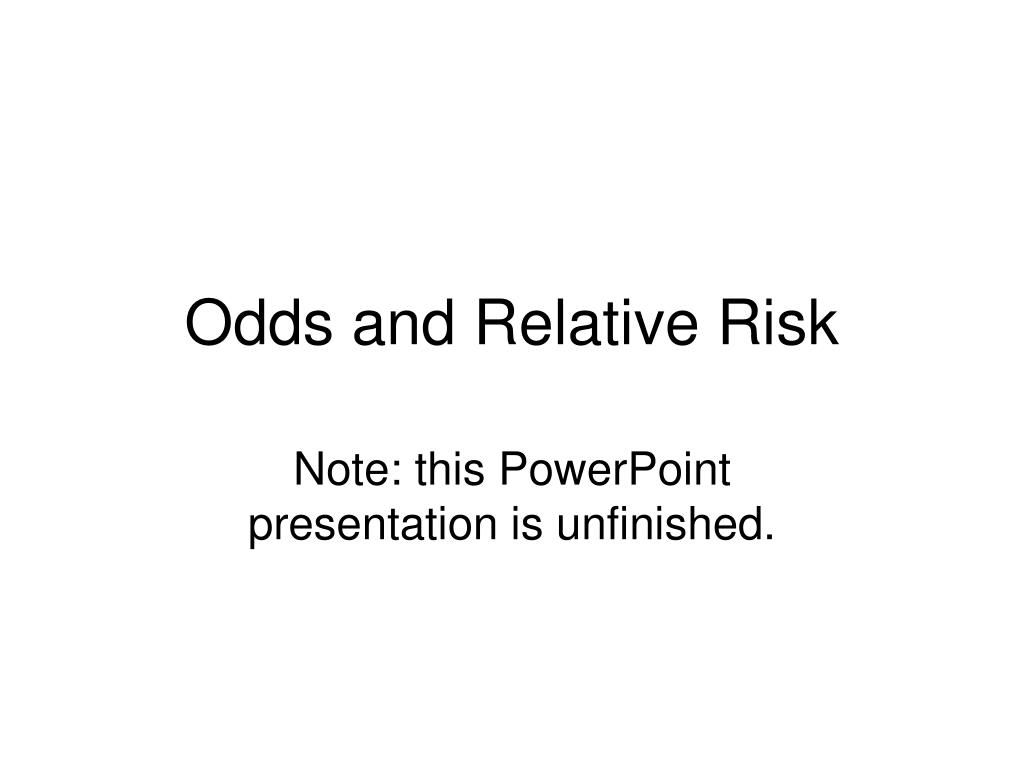


Ppt Odds And Relative Risk Powerpoint Presentation Free Download Id
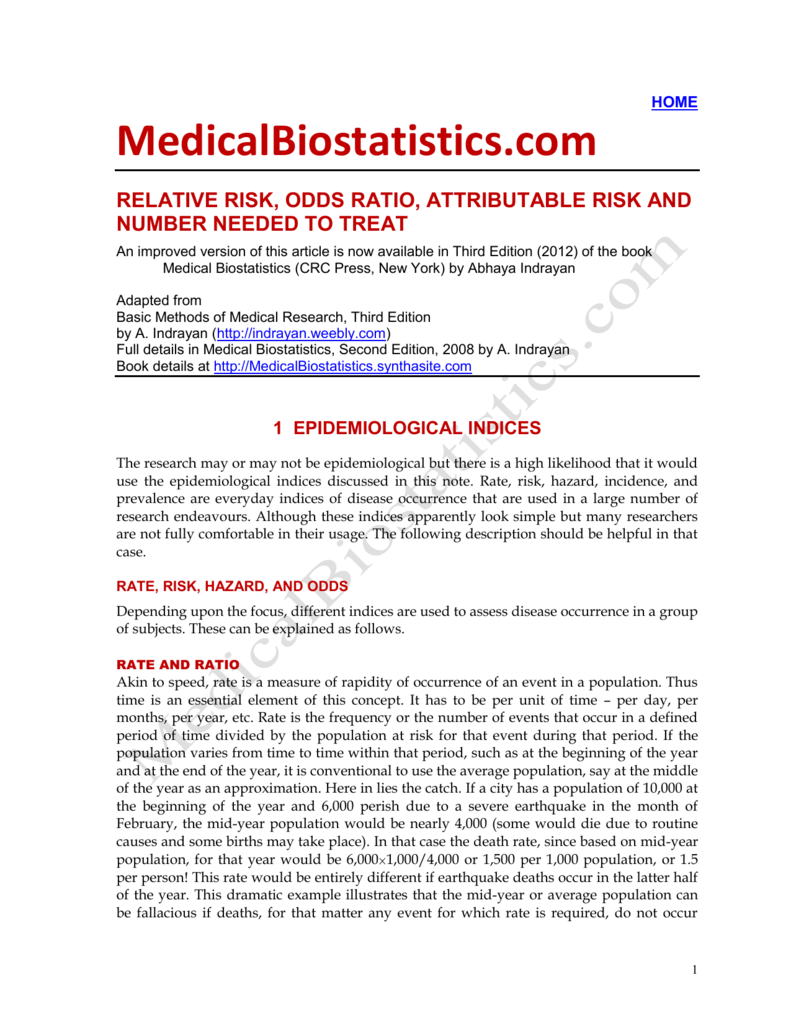


Relative Risk Odds Ratio Attributable Risk And
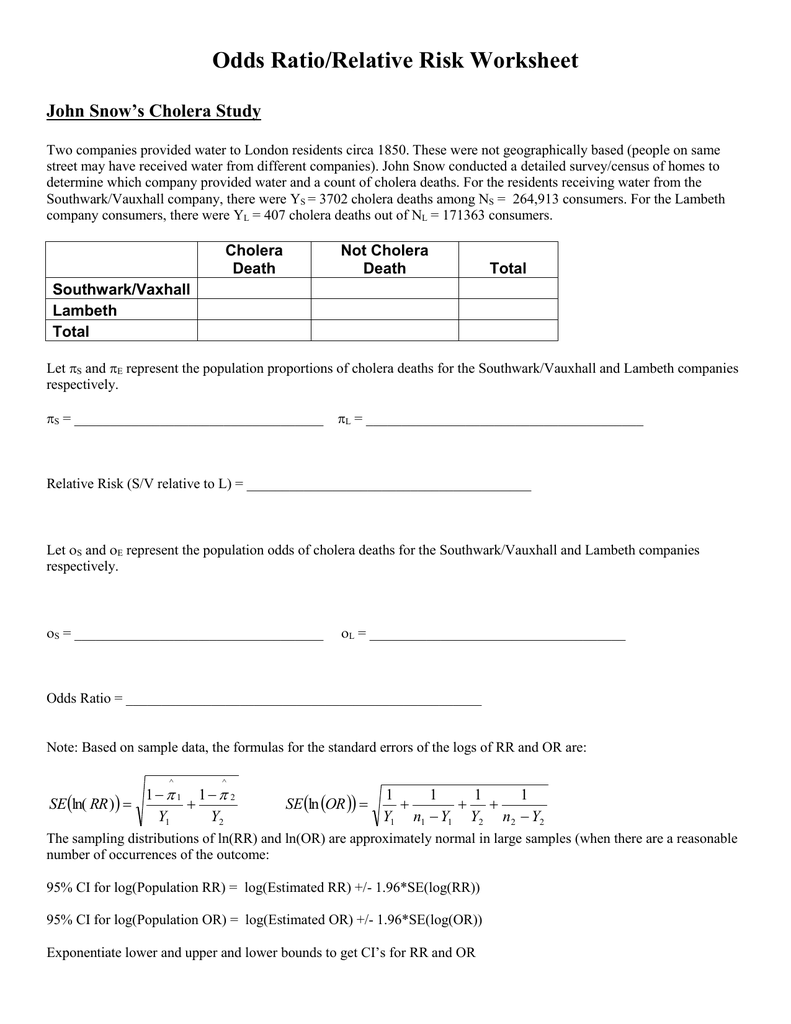


Odds Ratios And Relative Risks John Snow Cholera Data



Padb Published Association Database Bmc Bioinformatics Full Text


Forest Plots Of Relative Risks And Odds Ratios Of Detecting Fecal Download Scientific Diagram



Comparing A Relative Risk To An Odds Ratio Academic Website Of Dr Einar Holsbo



Pdf When To Use The Odds Ratio Or The Relative Risk



Odds Ratio Relative Risk Risk Difference Statistics Tutorial 30 Marinstatslectures Youtube


Absolute Risk Vs Relative Risk Vs Odds Ratio Pp Made Easy On Vimeo



Eric Topol Is It Safe To Go Back To Work An Essay Proposes A Gradient Of Relative Risk That S Playing The Odds T Co G4jye2mbtc But Until We Have Guidance Systems W



Evidencebased Journal Club Intentiontotreat Odds And Risk Paul


Epidemiology Stepwards



8a4bpwtxmyua2m



Risk Ratio Vs Odds Ratio Page 1 Line 17qq Com



Relative Risk And Odds Ratio Youtube



How To Interpret And Use A Relative Risk And An Odds Ratio Youtube



Pdf Odds Ratio Relative Risk Absolute Risk Reduction And The Number Needed To Treat Which Of These Should We Use


Plos One Impact Of Risk Factors On Different Interval Cancer Subtypes In A Population Based Breast Cancer Screening Programme



When Can Odds Ratios Mislead The Bmj


Plos One Factoring A 2 X 2 Contingency Table



Risk Estimates Relative Risk Ratio And Odds Ratio Analyses For Download Table
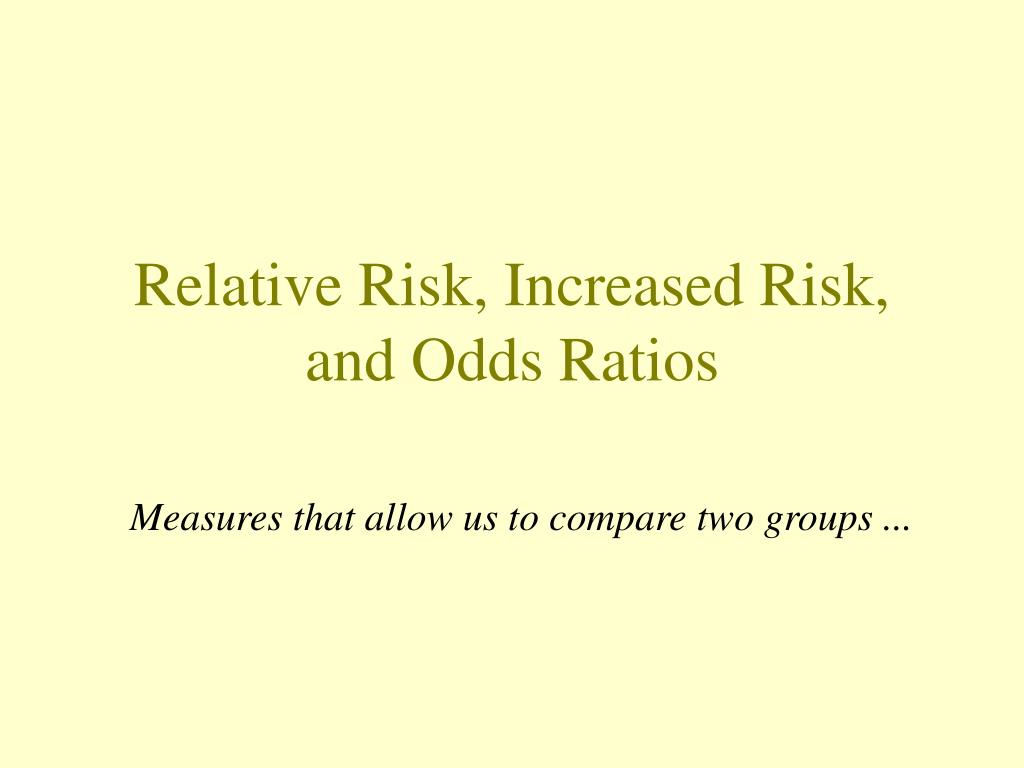


Ppt Relative Risk Increased Risk And Odds Ratios Powerpoint Presentation Id



Against All Odds Improving The Understanding Of Risk Reporting British Journal Of General Practice



Interpreting Odds Ratios And Relative Risk Youtube


Plos One Bleeding Risk With Long Term Low Dose Aspirin A Systematic Review Of Observational Studies



Pdf The Relative Risks Of Using Odds Ratios



Kari Tikkinen Icsmeeting Marco Blanker Marco Blanker Odd Ratios May Be Interpreted As Relative Risks Only If Prevalence Of Outcome Is Low Ebm T Co Go3admeck7



Effect Sizes Basicmedical Key



Relative Risk Or Odds Ratio And 95 Confidence Intervals For Download Scientific Diagram



F2vr7ynw7rf76m



How To Calculate Relative Risk And Odds Ratio Google Search Case Control Study Cancer Patients Central Nervous System



Critical Numbers Living With Risk Ppt Download



Pdf Analysing Longitudinal Data On Students Decimal Understanding Using Relative Risk And Odds Ratios Semantic Scholar


Plos One Systematic Review Of The Predictors Of Statin Adherence For The Primary Prevention Of Cardiovascular Disease



Relative Risk Vs Odds Ratio Youtube



Pdf Relative Risks Versus Odds Ratios



Relative Risk Odds Ratios Youtube



Comparing A Relative Risk To An Odds Ratio Academic Website Of Dr Einar Holsbo


Plos One Presymptomatic Risk Assessment For Chronic Non Communicable Diseases



Relative Risks Odds Ratios The Relative Risk Two Binomials Coursera



What Is Risk And Relative Risk By Sergen Cansiz Jan 21 Towards Data Science



Odds Ratios For Remarriage And Relative Risk Ratios For Marrying A Download Table
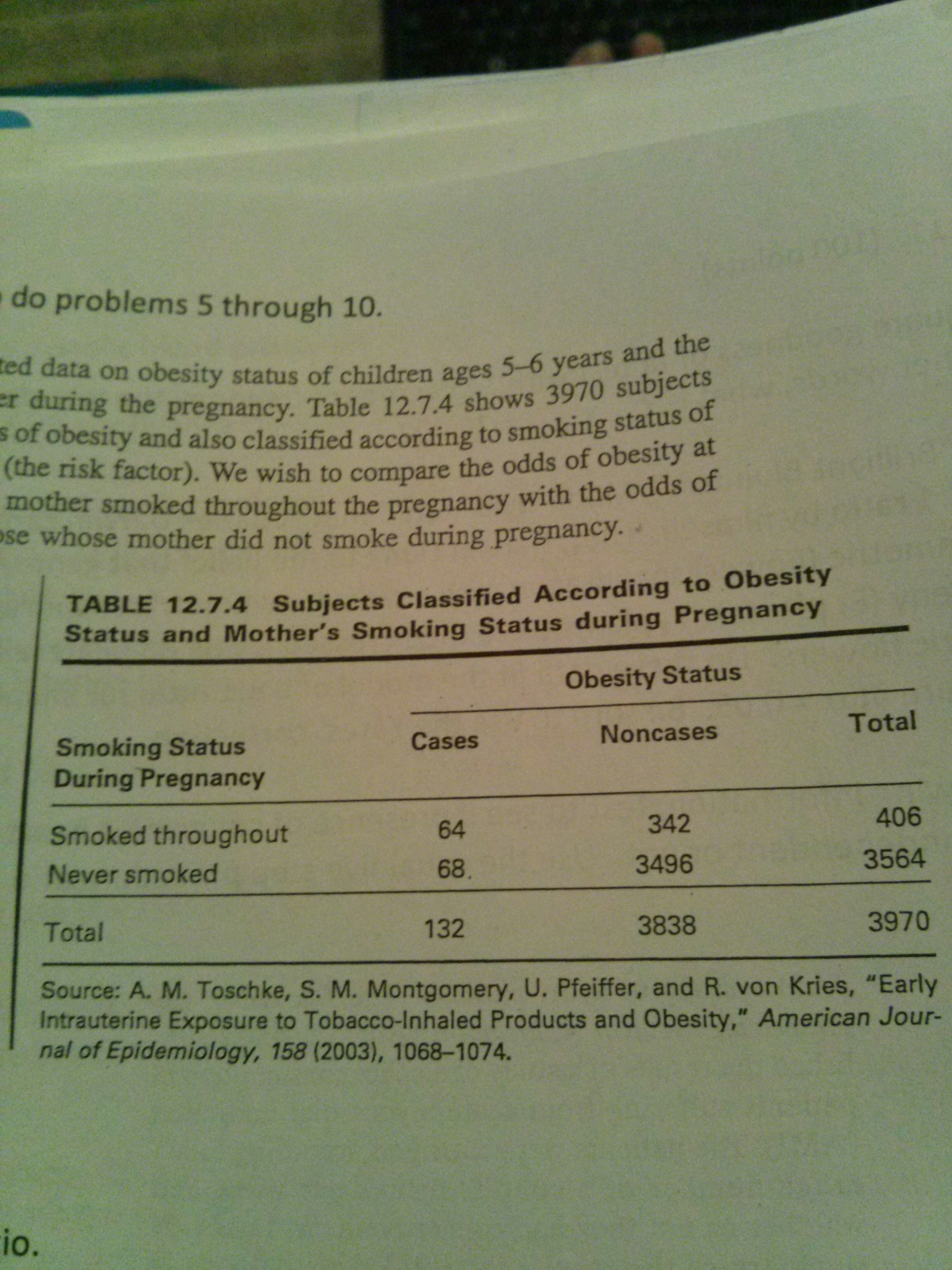


Solved 1 Calculate The Odds Ratio The 95 Confidence In Chegg Com
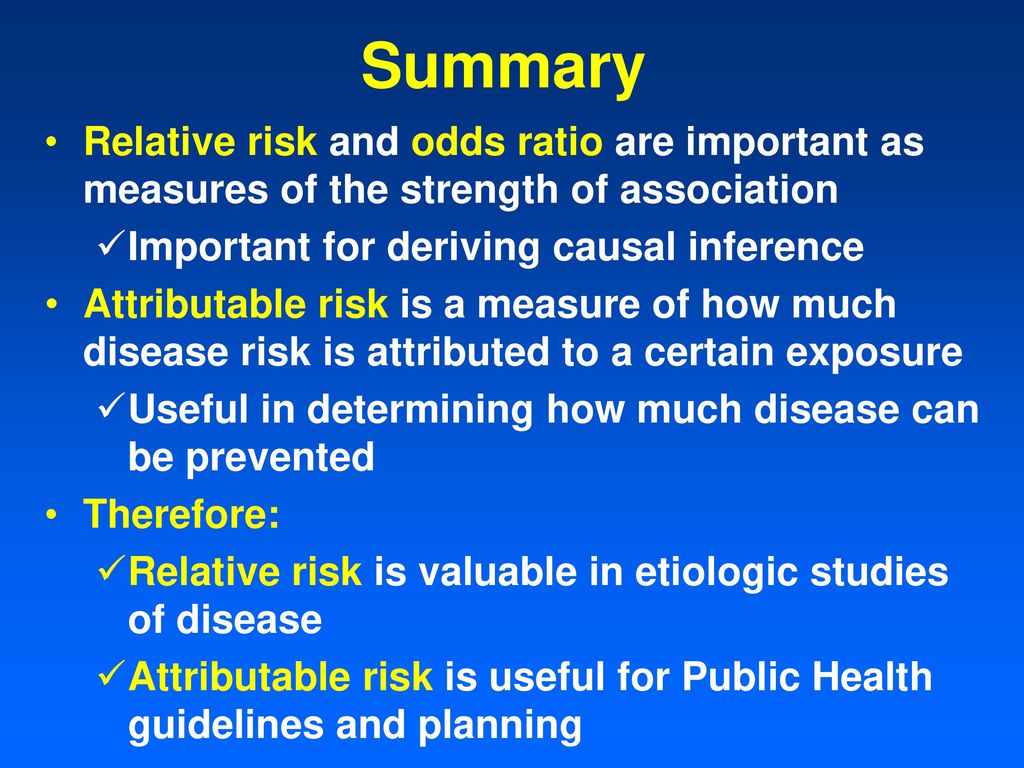


Relative And Attributable Risks Ppt Download



Figure 1 From Selective Serotonin Reuptake Inhibitors Ssris And The Risk Of Congenital Heart Defects A Meta Analysis Of Prospective Cohort Studies Semantic Scholar



Ppt Case Study Relative Risk And Odds Ratio Powerpoint Presentation Id
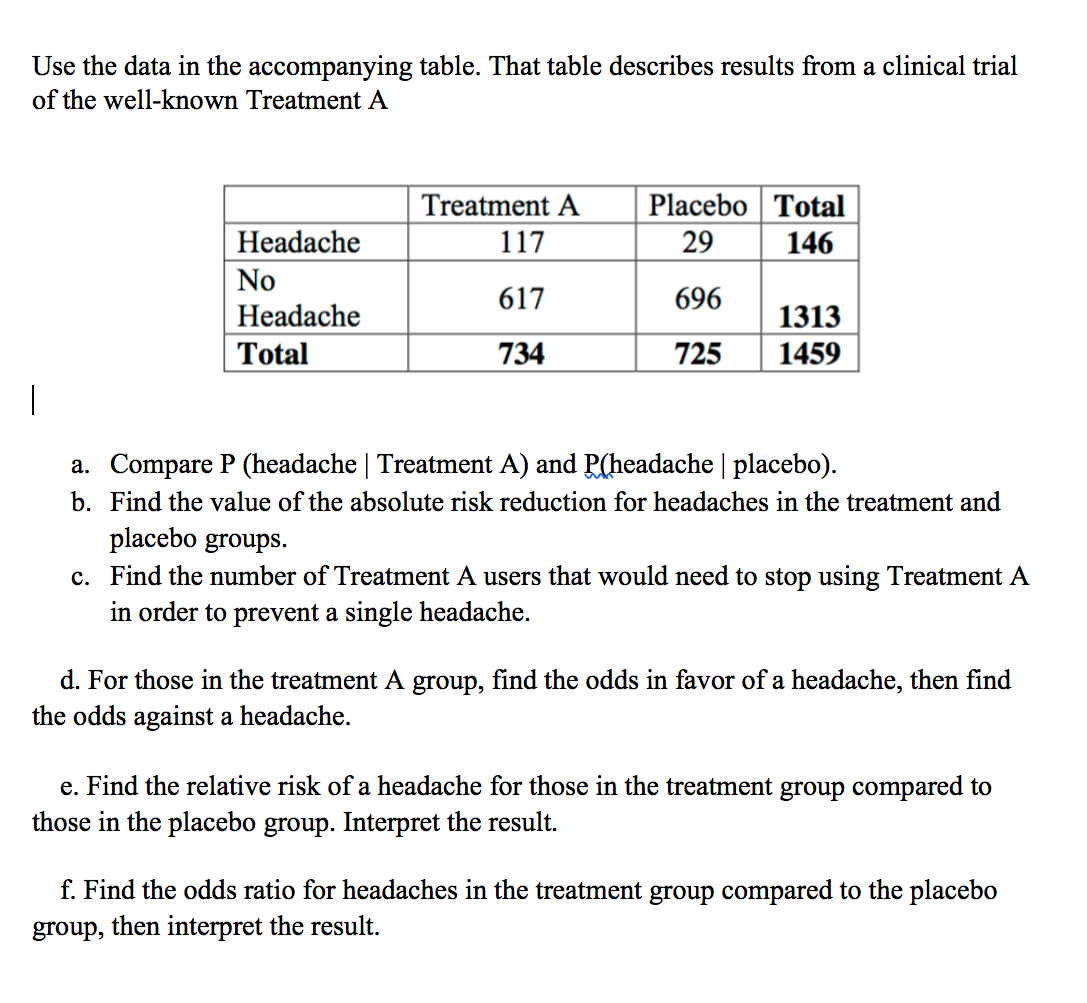


Solved Use The Data In The Accompanying Table That Table Chegg Com



Relative Risk Versus Odds Ratio Usmle Biostatistics 4 Youtube



Risks And Odds Basicmedical Key



Madhu Pai Md Phd Incidence Prevalence Odds Risk Rate Relative Risk Excess Risk Risk Reduction Hazard Confused When I Was A Phd Student Ucberkeleysph I Worked On A Handout
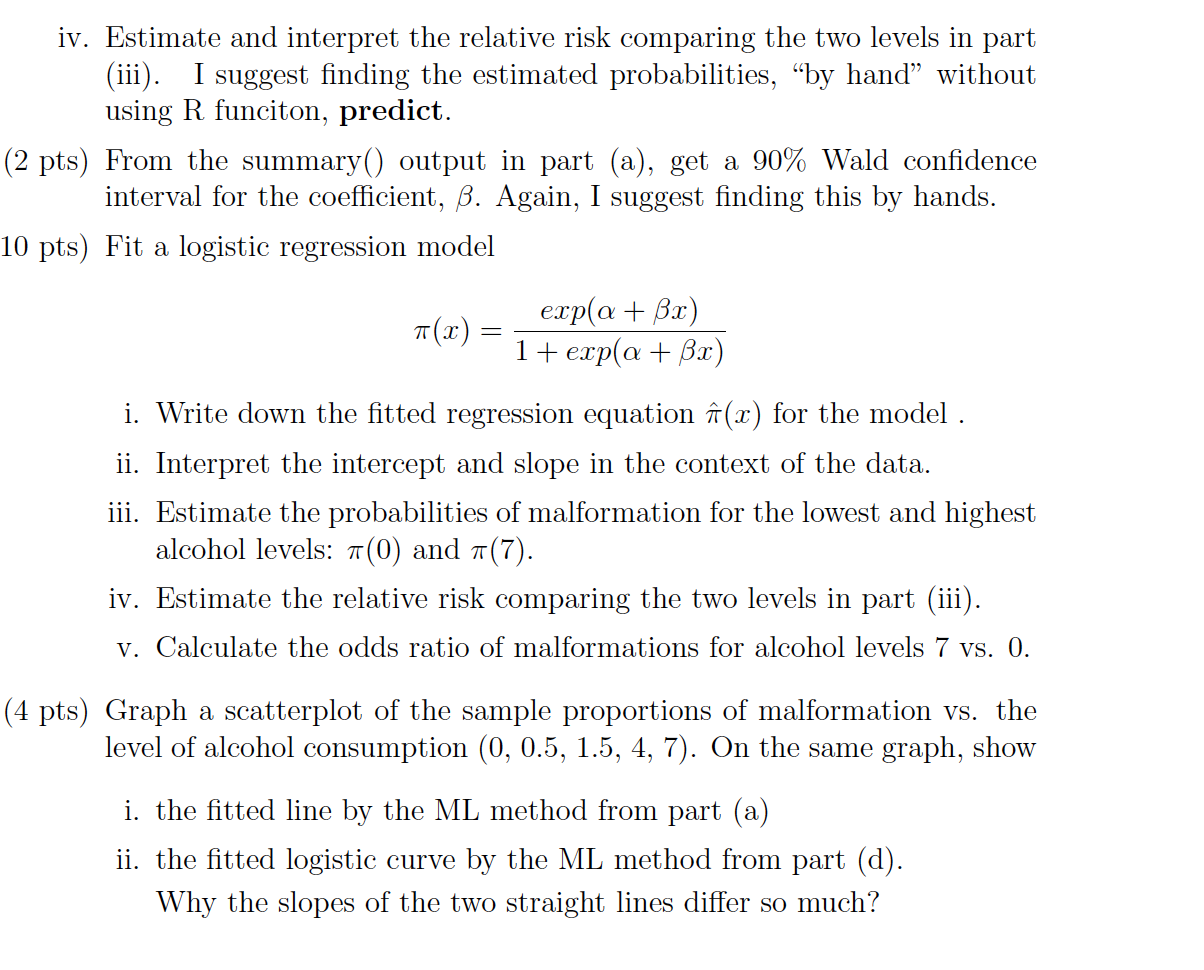


Solved Iv Estimate And Interpret The Relative Risk Compa Chegg Com



No comments:
Post a Comment